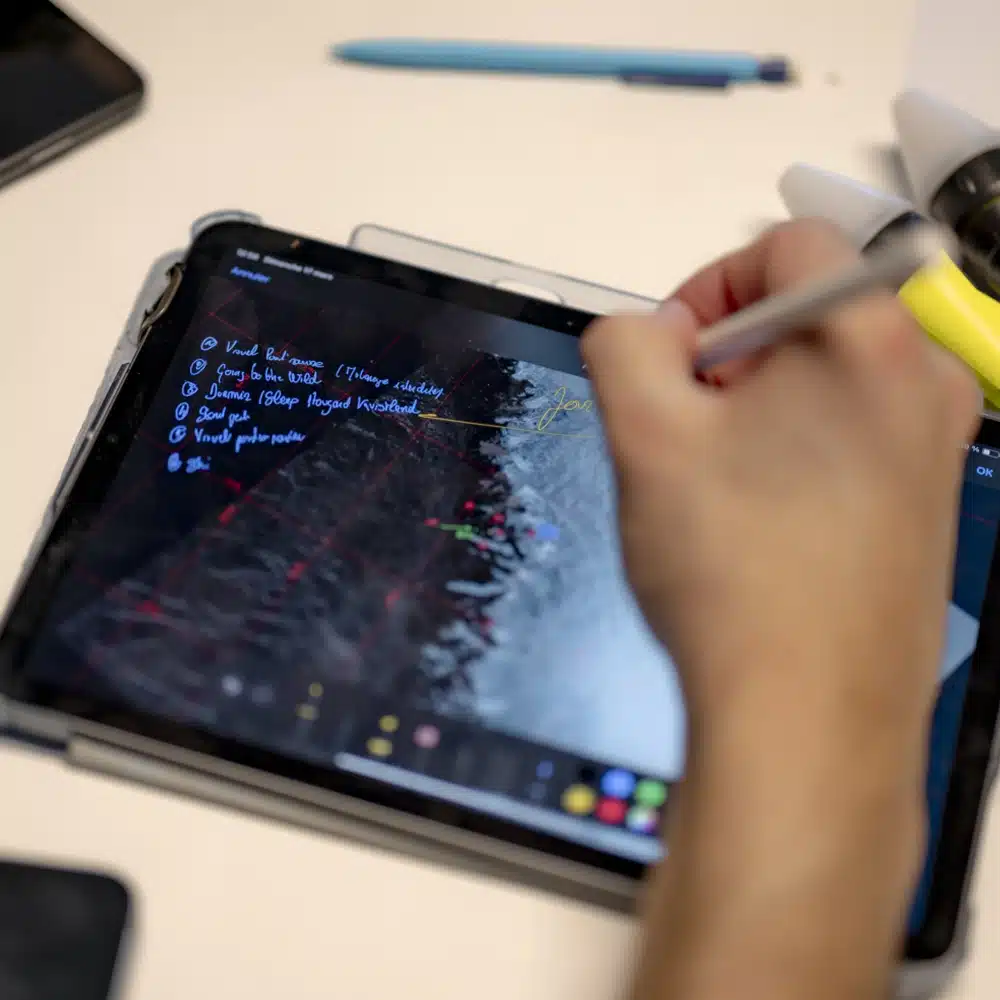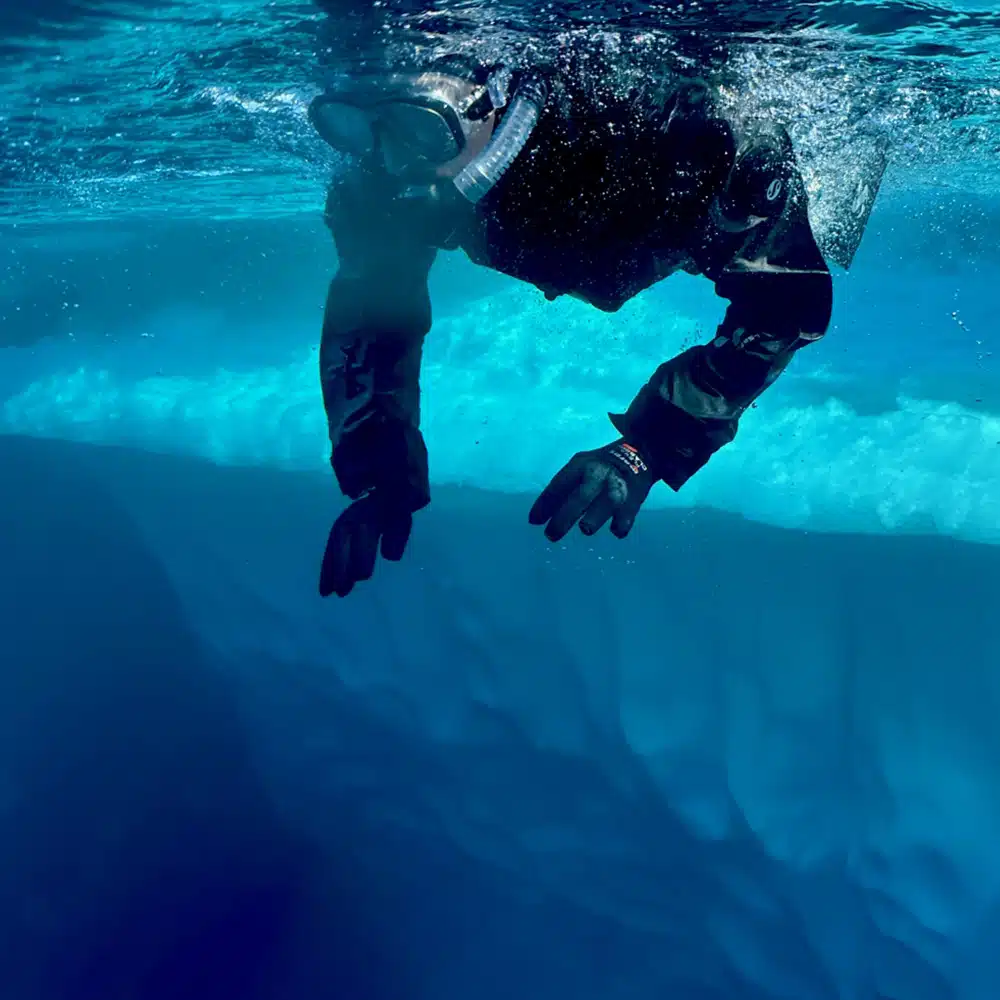From scouting to setting sail
Extraordinary cruises require extraordinary preparation. This is the motto that took Mathieu Tsingrilaras, second captain of the PONANT fleet, and José Sarica, PONANT Expedition’s experiences director, one thousand kilometres north of the Arctic Circle in March 2024, where they dreamt up an all-new adventure in the farthest reaches of Greenland. Thanks to Greenland expert and explorer Nicolas Dubreuil, co-founder of SEDNA, this scouting expedition was a completely immersive experience that gave both men plenty of opportunities to meet local people.
“It was on the plane back to France that it really struck me that the cruise’s passengers would get an intensely personal experience and lose all sense of time and space.”
What was the main purpose of the scouting trip to north-west Greenland?
José Sarica: It was important to organise a scouting trip because we wanted to set up a new experience in Kullorsuaq which would give people a chance to visit in early spring for the very first time, so we could offer activities on the ice floes. We had to be there to assess the terrain and climate, and have conversations with the local Inuit community about what kind of experience we could offer our passengers.
Mathieu Tsingrilaras: I took part in the scouting mission so that I could confirm Le Commandant Charcot would be safe to operate. You need very precise information if you are going to sail in polar regions because of the extreme weather conditions and the fact that there are no up-to-date maps of the area – some bathymetric surveys date back to the early 20th century – and, of course, you have to understand the polar environment, where the ice can change very quickly.

What was the first challenge you faced?
J.S.: The main aim was to reach Kullorsuaq but this was a difficult task from the start, as we couldn’t get further than Upernavik from Greenland’s capital, Nuuk. We were stuck there for a day because the helicopters couldn’t take off. Nicolas Dubreuil [editor: see boxed text] has the expertise you need to manage situations like this, so he got in touch with some Inuit hunters he knew and we were able to reach Kullorsuaq by snowmobile, after a very long and extremely cold journey [editor: with temperatures below -20°C].
M.T.: It’s only 210 km as the crow flies between Upernavik and Kullorsuaq, but when the region is icebound, the only way to get between the two is to take a snowmobile across the ice.

Why was it so important to talk to the local community in Kullorsuaq?
M.T.: Local Inuit hunters gave us some invaluable information that helped us scout the area before we sailed it. They shared some really crucial information about, for example, the key currents, where the first-year ice was located and the places we’d find intact icebergs.
J.S.: The Inuit really trust us and vice versa thanks to the relationship Nicolas has built up with local hunters and his own years of experience. The scouting expedition gave us the chance to take things a step further by getting the people of Kullorsuaq involved in designing the activities for the trip we had in mind.

What did you learn from this experience?
M.T.: It was extremely rewarding, both personally and professionally. Meeting the local community was incredible, because we often communicated through gestures and looks.
J.S.: When I was on the dog sled, I remember wondering how long I’d been away. There’s an Inuit word which sums it up best: “Imaqa” (pronounced “Imara”). It’s untranslatable really, but it refers to a frame of mind where you just let things happen rather than trying to control nature, and you adapt to the unique environment.
“It’s a place that makes you feel tiny, not just because of the landscape, which is all polar desert whiteness and rocks, but also because you feel like a stranger in a natural world you don’t understand. On the other hand, it was clear just how well the local community knows its environment, and it shared that knowledge with us.”

Can you tell us more about the upcoming cruise and the activities on offer?
M.T.: In terms of the sailing itinerary, it starts in Nuuk, with the first leg in Disko Bay, before going on to Kullorsuaq. The route is dotted with lots of extremely different glacial landscapes. Passengers will get the sense of how the ice is a living thing. The ship will be in open water when we leave Nuuk. We then move into an area where there is more and more ice, until eventually the entire coastline is covered with it. When the ship passes Disko Island and then the enormous Disko Bay, it will navigate through some immense tabular icebergs carved by the Ilulissat ice fjord.
J.S.: PONANT has decades of experience in polar cruises, but with this new itinerary we’re offering a truly ground-breaking experience with an approach that’s closer to an expedition. Unlike during more standard polar cruise activities, travellers won’t travel on Zodiacs very much at all, as everything is done by dog sled. The charm of this voyage to the far north-west of Greenland is that it offers some very immersive experiences in icebound landscapes, including hiking and snowshoeing, traditional Inuit kayaking, beluga and narwhal watching and even snorkelling through the ice in a wetsuit. The cruise will also give travellers the chance to become part of the community by staying with local people.

Nicolas Dubreuil: a guide and pioneer
As a born adventurer and former PONANT expedition leader, Nicolas Dubreuil, co-founder of SEDNA, has been helping to encourage cultural exchanges between the Inuit community and France for several years. It didn’t take long for this former IT teacher to discover his love of Greenland, where he now lives for part of the year. He is privileged to have a relationship with the extremely remote communities living in Upernavik and Kullorsuaq which gives him plenty of sought-after expertise in how to explore and travel around Baffin Bay.
Photo credits: ©PONANT/Julien Fabro

PONANT takes you there
Meet the peoples who call the Arctic home



